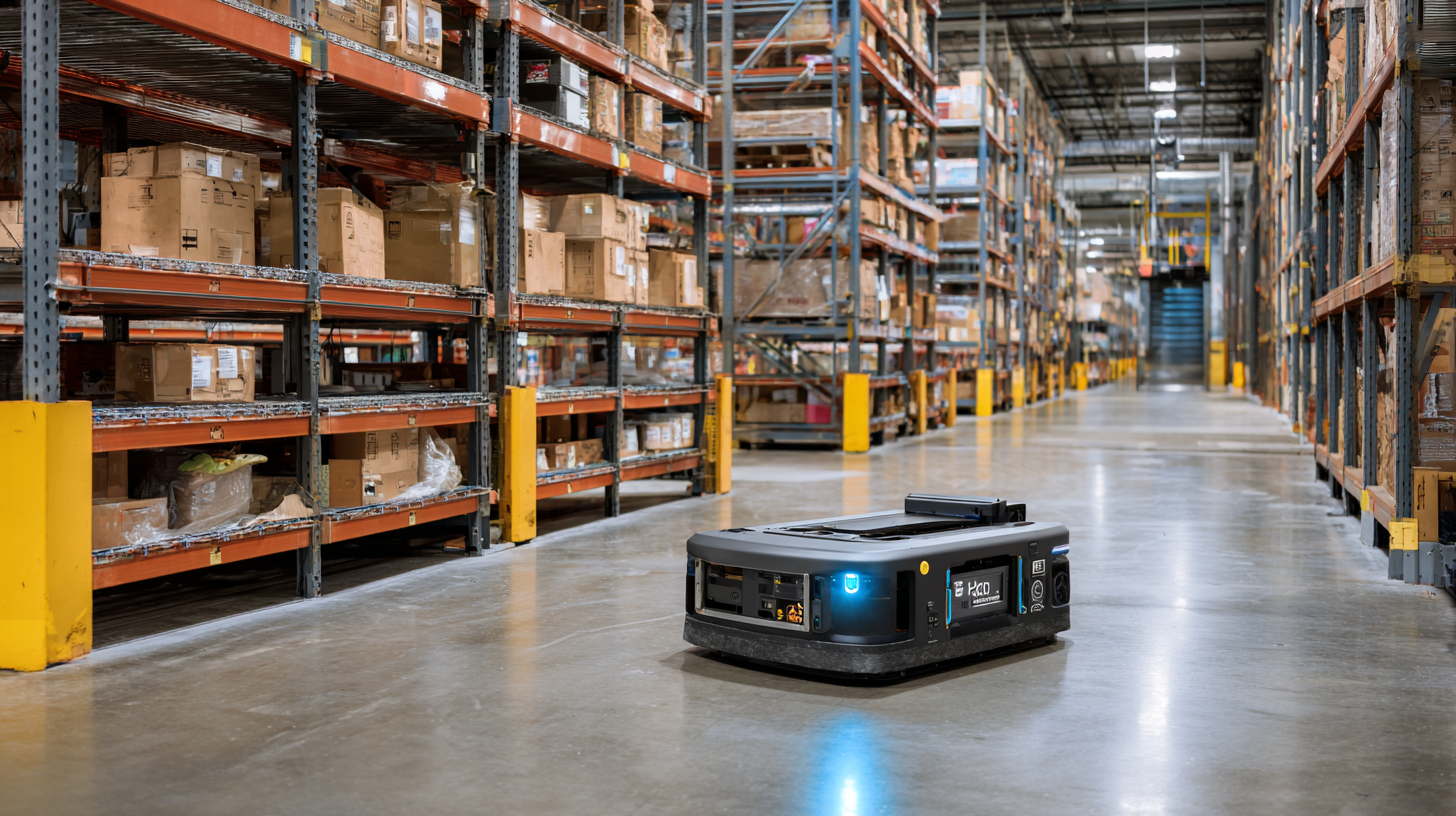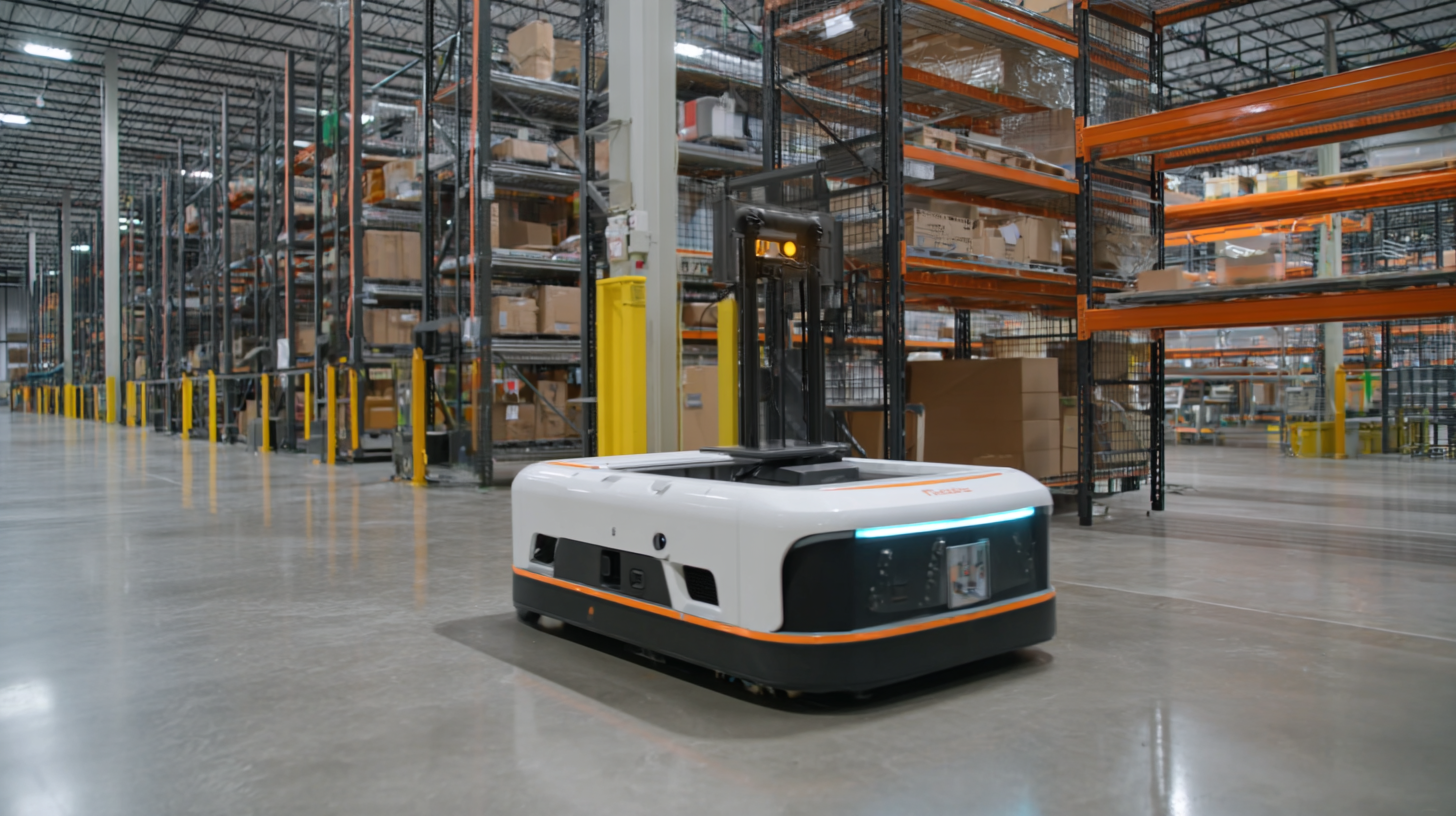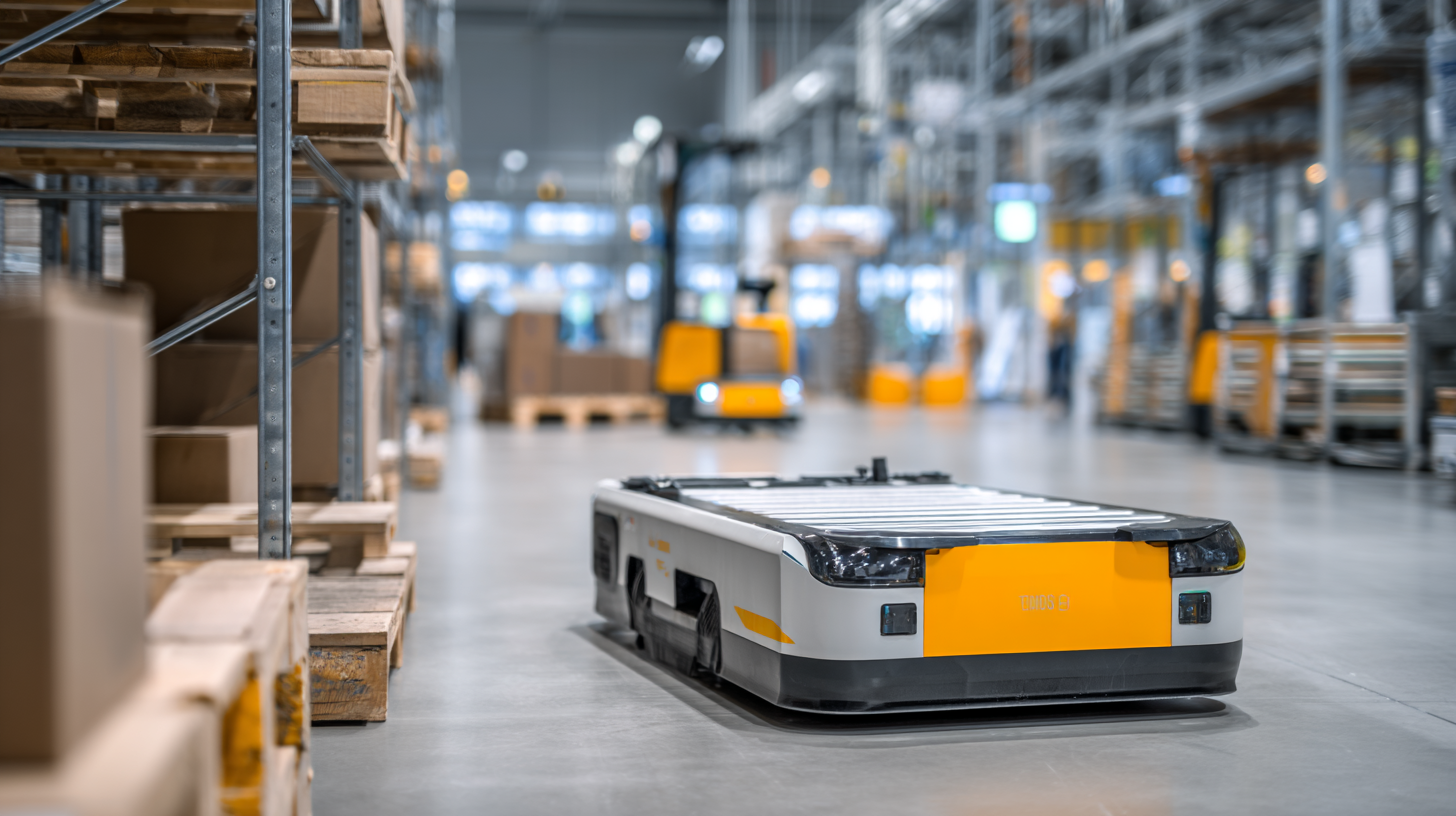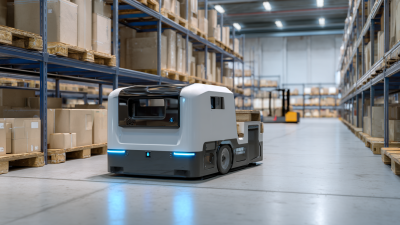Unlocking Warehouse Efficiency: How Robot AMRs Are Transforming Supply Chains Today
In today's fast-paced supply chain environment, the adoption of robotic autonomous mobile robots (AMRs) is proving to be a game-changer for warehouse efficiency. According to a recent report by the Association for Advancing Automation, the use of robotics in warehouse operations is projected to grow by 25% annually, driven by the increasing demand for faster order fulfillment and operational cost reduction. Robot AMRs are not only enhancing picking accuracy but also streamlining various logistics processes, significantly improving throughput and reducing labor costs. Moreover, a survey conducted by Logistics Management indicates that 70% of logistics professionals believe that integrating robot AMRs will be essential for maintaining competitiveness in the next five years. As businesses continue to seek innovative solutions to optimize their supply chains, understanding the transformative potential of robot AMRs becomes crucial for operational success and sustainability.

Enhancing Order Fulfillment Accuracy with AMRs in Warehouse Environments
The integration of Autonomous Mobile Robots (AMRs) in warehouse environments is revolutionizing order fulfillment accuracy. As e-commerce demand escalates and competition intensifies, warehouses are adapting to novel technologies to enhance efficiency. AMRs offer unmatched precision in inventory management, reducing human error and streamlining operations. Their capacity to navigate complex layouts not only speeds up the picking process but also optimizes space utilization, making warehouses more agile in meeting customer demands.
Tips for Implementation:
- Start small by introducing AMRs in select areas of your warehouse to assess their impact before a full deployment.
- Ensure proper training for staff to work alongside robots, fostering a collaborative environment that maximizes efficiency.
- Regularly review AMR performance data to identify areas for improvement and calibrate operations accordingly.
The steady rise of robotic technology, especially those powered by GenAI, is indicative of the future of warehousing. Robots are no longer limited to repetitive tasks; they now handle complex logistical challenges, pushing the boundaries of automation. As the automation market grows, particularly with AMRs projected to reach significant market size in the coming years, the emphasis on enhancing order fulfillment through technology becomes even more critical.
Increasing Picking Speed by Up to 50% Using Autonomous Mobile Robots in Supply Chain
 Autonomous Mobile Robots (AMRs) are making remarkable strides in the realm of warehouse operations, particularly by boosting order picking speeds by up to 50%. This surge in efficiency is critical for businesses striving to keep pace with the rapid evolution of e-commerce and consumer expectations for faster deliveries. As these robots navigate complex environments, they enhance accuracy and productivity, allowing human workers to focus on more strategic tasks.
Autonomous Mobile Robots (AMRs) are making remarkable strides in the realm of warehouse operations, particularly by boosting order picking speeds by up to 50%. This surge in efficiency is critical for businesses striving to keep pace with the rapid evolution of e-commerce and consumer expectations for faster deliveries. As these robots navigate complex environments, they enhance accuracy and productivity, allowing human workers to focus on more strategic tasks.
Tips: To maximize the benefits of implementing AMRs, companies should assess their current workflow and identify processes that can be optimized. Training staff on how to collaborate effectively with these robots can also enhance overall productivity. Keeping a close eye on performance metrics will help in fine-tuning operations further to achieve seamless integration.
As the global logistics robot market continues its ascent—projected to reach over $35 billion by 2030—investing in AMR technology is increasingly becoming a necessity rather than a luxury. With advancements in artificial intelligence, these robots are not only automating mundane tasks but also learning from their environments, thereby continuously improving their operational efficiencies.
Reducing Labor Costs by 30% through Automation: The Impact of AMRs in Warehousing
As the demand for efficiency in supply chains grows, Automated Mobile Robots (AMRs) have surfaced as a game-changer in warehousing operations. By automating routine tasks such as picking, sorting, and transporting goods, AMRs significantly streamline warehouse workflows, leading to enhanced productivity. Companies employing AMRs have reported remarkable reductions in labor costs, achieving up to 30% savings. This shift not only alleviates the strain on human workers but also allows them to focus on more complex, value-added tasks, further enhancing overall operational effectiveness.
Furthermore, the integration of AMRs into warehousing processes fosters scalability and agility. With the capability to quickly adapt to fluctuating demands, AMRs enable warehouses to scale operations without the proportional increase in labor costs. The result is a more dynamic environment where efficiency is paramount, ultimately translating to improved service levels and customer satisfaction. As these advanced technologies become more accessible, their transformative impact on supply chains is expected to expand, paving the way for a future where automated systems and human workers collaborate seamlessly.
Warehouse Efficiency with AMRs: Labor Cost Reduction
How Robot AMRs are Boosting Warehouse Space Utilization by 20% or More
As supply chains evolve, the integration of Autonomous Mobile Robots (AMRs) is revolutionizing warehouse operations significantly. Recent research indicates that employing robot AMRs can enhance warehouse space utilization by 20% or more. This increase is primarily due to their ability to navigate efficiently through narrow aisles and optimize vertical storage, ultimately enabling warehouses to stock more products in the same footprint. According to a McKinsey report, companies using AMRs can experience up to a 30% reduction in operational costs, highlighting their impact on both efficiency and profitability.
Tips for implementing AMRs include starting with a thorough assessment of your current warehouse layout and inventory flow. Identify areas where AMRs can be most beneficial, such as high-density storage zones or pick-and-pack stations. Additionally, consider investing in an integrated software solution that allows for real-time data tracking, enhancing the synergy between human workers and robotics within your warehouse.
It’s also essential to provide adequate training for staff to facilitate a smooth transition to automation. Employees should understand how AMRs operate and how to collaborate with them effectively to maintain productivity levels. By fostering a culture of adaptability and continuous improvement, warehouses can fully realize the potential benefits of AMR technology.

Integrating AMRs with Warehouse Management Systems for Seamless Operations
As the demand for efficiency and accuracy in supply chains escalates, the integration of Autonomous Mobile Robots (AMRs) with Warehouse Management Systems (WMS) is proving transformative. A report by the Research and Markets indicates that the global warehouse automation market is projected to reach $30 billion by 2026, driven significantly by the adoption of AMRs. These robots enhance operational efficiency by streamlining processes such as inventory management, order fulfillment, and transportation within warehouses.
AMRs work seamlessly with WMS to facilitate real-time data exchange, allowing for optimal route planning and task prioritization. According to a survey by Interact Analysis, warehouses utilizing AMRs can increase their throughput by up to 50%, while reducing labor costs by 30%. This synergy not only minimizes human error but also maximizes space utilization and speed, creating a more agile supply chain capable of responding quickly to market changes. By leveraging advanced AI and machine learning, AMRs can learn from their environment, enhancing their operational effectiveness and making intelligent decisions autonomously.
Unlocking Warehouse Efficiency: How Robot AMRs Are Transforming Supply Chains Today
| Warehouse Location | Number of AMRs | Average Pick Rate (Items/Hour) | Reduction in Labor Costs (%) | Integration with WMS |
|---|---|---|---|---|
| East Coast Distribution Center | 15 | 250 | 30 | Yes |
| West Coast Fulfillment Hub | 20 | 300 | 25 | Yes |
| Midwest Storage Facility | 10 | 200 | 20 | No |
| Southern Regional Depot | 25 | 350 | 35 | Yes |
Related Posts
-

Maximizing Efficiency with Logistics Robotics A Comprehensive How to Guide
-

How to Enhance Warehouse Efficiency with AMR Robots
-

How to Maximize Efficiency with AMR Robots: Insights from the 2023 Logistics Automation Report
-

Ultimate Guide to Mastering Agile Robotics for Business Success
-

Unlocking the Future of Innovation with Robotics Lab Technologies for Education and Research
-

How to Leverage Think Robotics for Enhanced Industrial Efficiency